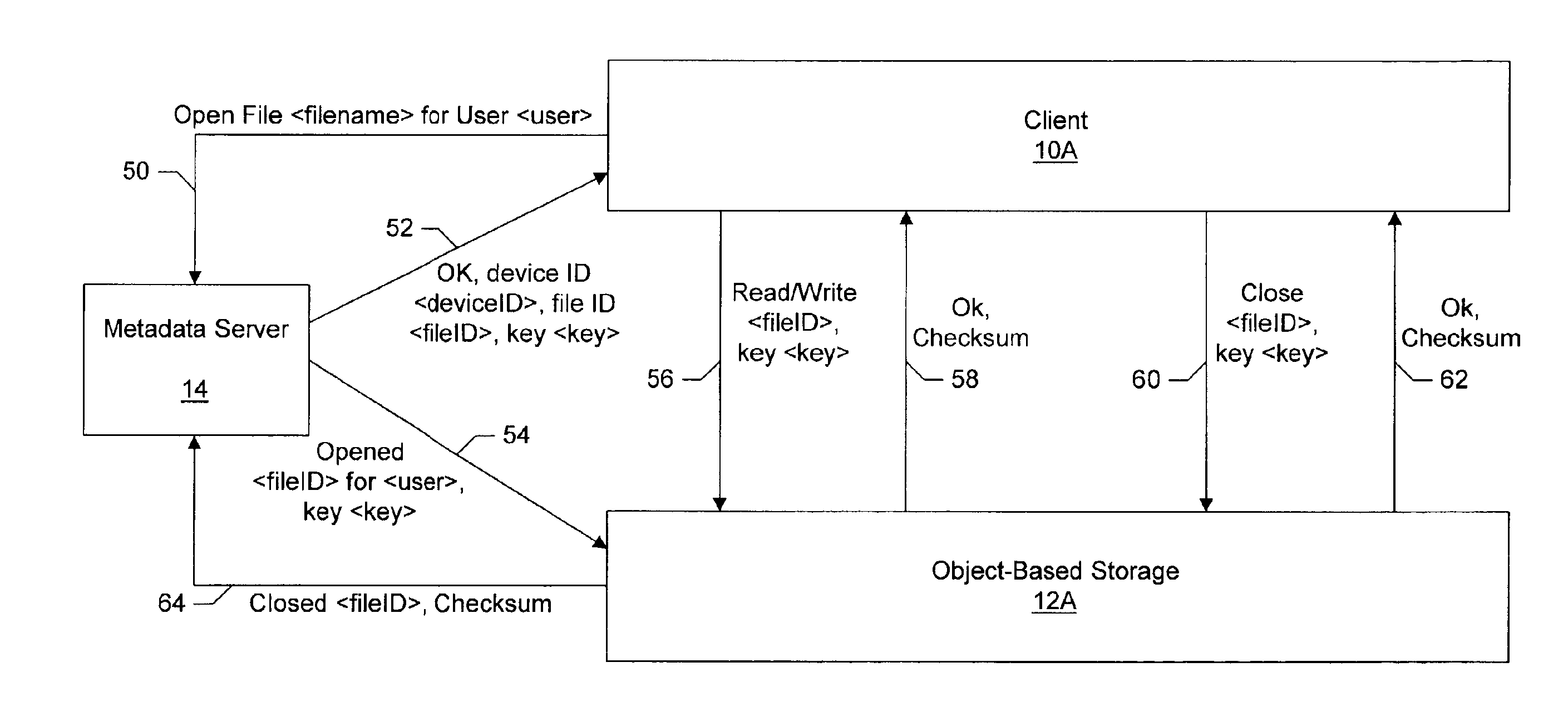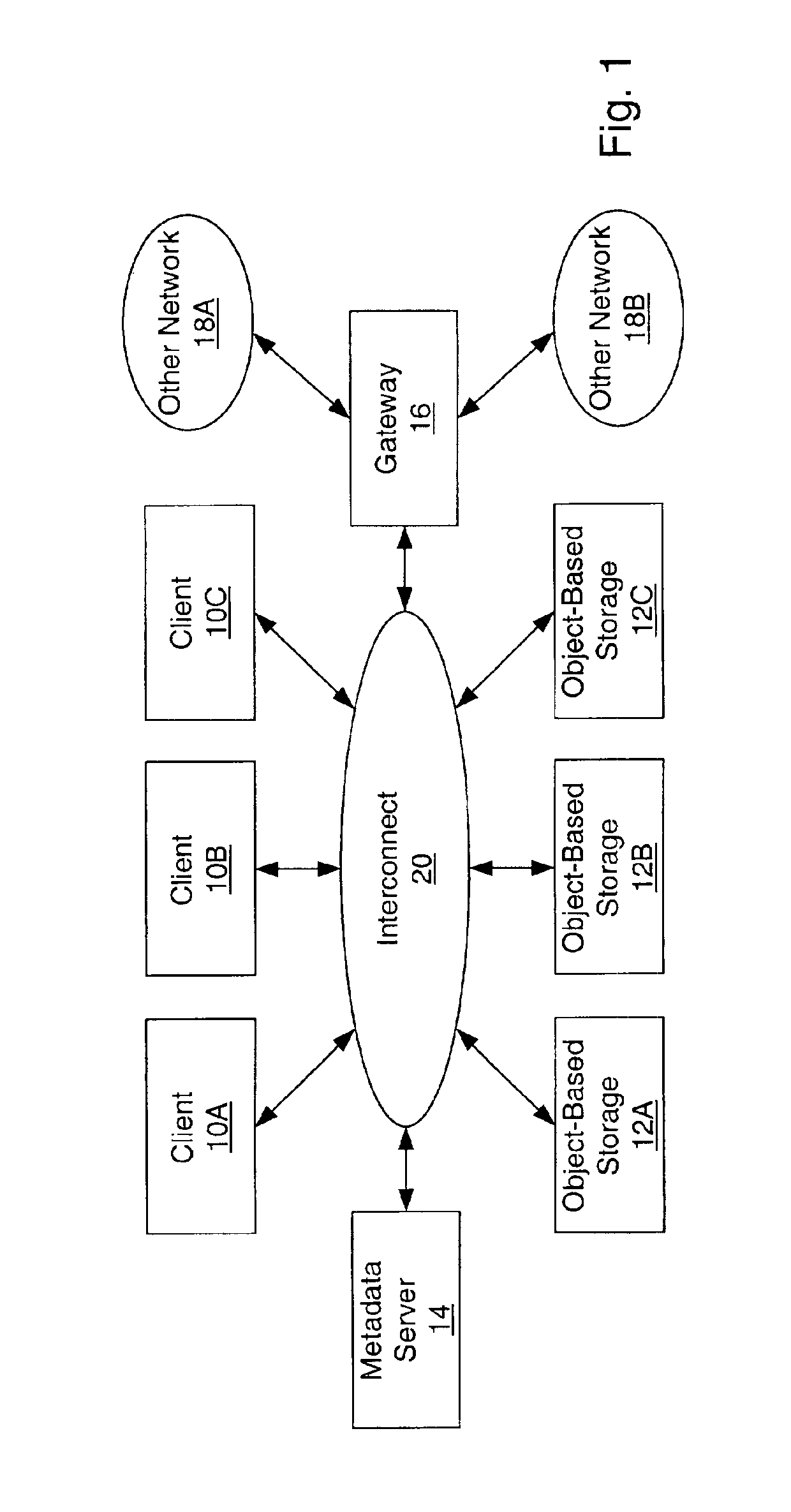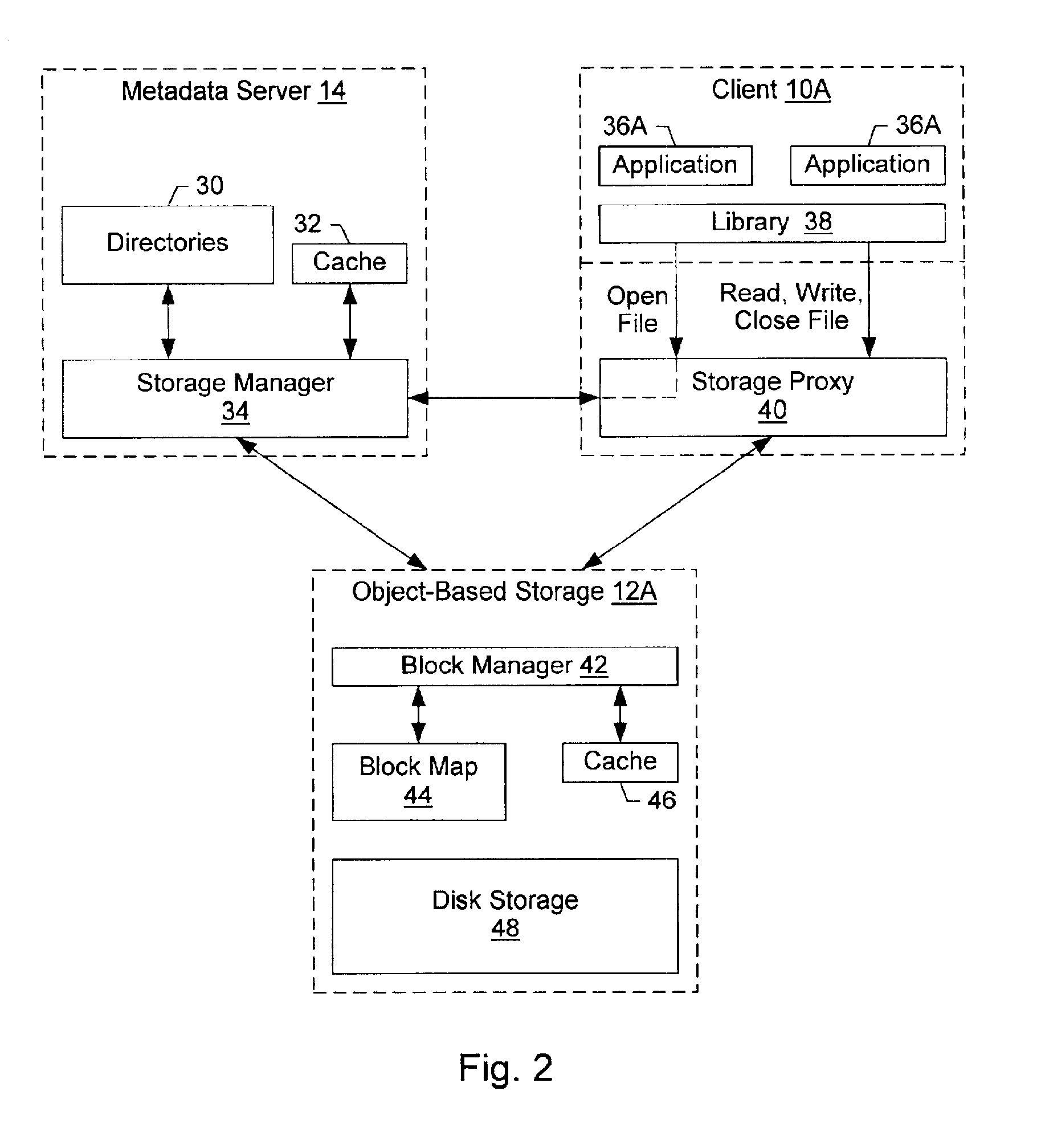Direct access from client to storage device
a storage device and client technology, applied in memory systems, program control, instruments, etc., can solve problems such as complex and difficult to correctly implement caches, caches complicating the recovery from system failures, and current distributed file systems, so as to reduce the latency of accesses, reduce cache complexity, and reduce the effect of caches
- Summary
- Abstract
- Description
- Claims
- Application Information
AI Technical Summary
Benefits of technology
Problems solved by technology
Method used
Image
Examples
Embodiment Construction
[0021]Turning now to FIG. 1, a block diagram of a networked computing environment is shown. Other embodiments are possible and contemplated. In the embodiment of FIG. 1, the networked computing environment includes a plurality of clients 10A-10C, a plurality of object-based storages 12A-12C, a metadata server 14, a gateway 16, and other networks 18A-18B. Clients 10A-10C, storages 12A-12C, metadata server 14, and gateway 16 are connected via an interconnect 20. In various embodiments, metadata server 14 may be replicated for reliability and / or performance or may be implemented as software components in other nodes.
[0022]Generally, clients 10A-10C execute user applications that operate upon files stored on storages 12A-12C. A client 10A-10C may open a file by transmitting an open command to metadata server 14, which maps the file name used by the application to: (i) a file identifier (file ID) identifying the file to the storage 12A-12C storing the file; and (ii) a device identifier (...
PUM
 Login to View More
Login to View More Abstract
Description
Claims
Application Information
 Login to View More
Login to View More - R&D
- Intellectual Property
- Life Sciences
- Materials
- Tech Scout
- Unparalleled Data Quality
- Higher Quality Content
- 60% Fewer Hallucinations
Browse by: Latest US Patents, China's latest patents, Technical Efficacy Thesaurus, Application Domain, Technology Topic, Popular Technical Reports.
© 2025 PatSnap. All rights reserved.Legal|Privacy policy|Modern Slavery Act Transparency Statement|Sitemap|About US| Contact US: help@patsnap.com



